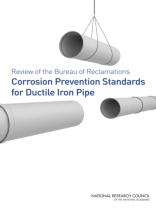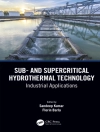Ductile iron pipe (DIP) was introduced about 50 years ago as a more economical and better-performing product for water transmission and distribution. As with iron or steel pipes, DIP is subject to corrosion, the rate of which depends on the environment in which the pipe is placed. Corrosion mitigation protocols are employed to slow the corrosion process to an acceptable rate for the application. When to use corrosion mitigation systems, and which system, depends on the corrosivity of the soils in which the pipeline is buried.The Bureau of Reclamation’s specification for DIP in highly corrosive soil has been contested by some as an overly stringent requirement, necessitating the pipe to be modified from its as-manufactured state and thereby adding unnecessary cost to a pipeline system.This book evaluates the specifications in question and presents findings and recommendations. Specifically, the authoring committee answers the following questions: Does polyethylene encasement with cathodic protection work on ductile iron pipe installed in highly corrosive soils? Will polyethylene encasement and cathodic protection reliably provide a minimum service life of 50 years? What possible alternative corrosion mitigation methods for DIP would provide a service life of 50 years?
Committee on the Review of the Bureau of Reclamation’s Corrosion Prevention Standards for Ductile Iron Pipe & Division on Engineering and Physical Sciences
Review of the Bureau of Reclamation’s Corrosion Prevention Standards for Ductile Iron Pipe [PDF ebook]
Review of the Bureau of Reclamation’s Corrosion Prevention Standards for Ductile Iron Pipe [PDF ebook]
Achetez cet ebook et obtenez-en 1 de plus GRATUITEMENT !
Langue Anglais ● Format PDF ● Pages 186 ● ISBN 9780309131643 ● Maison d’édition National Academies Press ● Publié 2009 ● Téléchargeable 3 fois ● Devise EUR ● ID 7141164 ● Protection contre la copie Adobe DRM
Nécessite un lecteur de livre électronique compatible DRM












